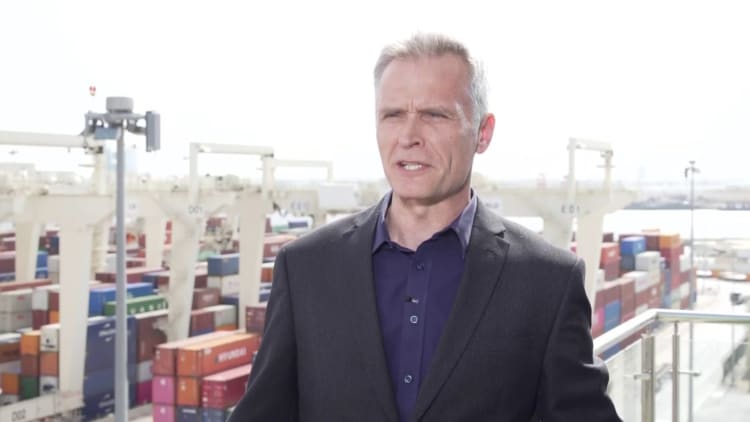Red Sea tensions risk significantly higher inflation, OECD warns

Elevated shipping costs as a result of ongoing tensions in the Red Sea could impede the global fight against inflation, the Organisation for Economic Co-operation and Development said Monday.
The Paris-based group estimates that the recent 100% rise in seaborne freight rates could increase import price inflation across its 38 member countries by nearly 5 percentage points if they persist.
That could add 0.4 percentage points to overall price rises after a year, the OECD said in its latest economic outlook.
In late 2023, major shipping firms began diverting their vessels away from Egypt’s Suez Canal, the quickest trade route between Europe and Asia, due to a spate of attacks by Iran-backed Houthi militants based in Yemen. Tensions remain high, with the navies of countries including the United States involved in the conflict.
A cargo ship travels on the Suez Canal in Ismailia Province, Egypt, Jan. 13, 2024.
Ahmed Gomaa | Xinhua News Agency | Getty Images
Ships are taking the longer Cape of Good Hope route around the southern coast of Africa, which increases journey times by between 30% and 50%, taking capacity out of the global market.
However, the OECD also notes that the shipping industry had excess capacity last year, a result of new container ships being ordered, which should moderate cost pressures.
Clare Lombardelli, chief economist at the OECD, told CNBC on Monday that a sustained increase in inflation as a result of the latest crisis is a risk, but not the group’s base case.
“It’s something we’re watching closely … we have seen an increase in shipping prices, if that were to continue for for an extended period, then that would feed through into consumer price inflation. But at the moment, we don’t anticipate that to be the case,” Lombardelli said.
According to Tiemen Meester, chief operating officer at Dubai-based logistics firm DP World, European imports are presenting the biggest challenge and have seen significant delays to cargo that was already en route.
“Unfortunately, there’s higher cost in the inefficiencies in the network, so ultimately, the rates are going up. But it’s actually nowhere near to where they were at their peaks during Covid … How that costs will find its way to the consumer, we’ll have to see,” Meester told CNBC, describing it as a “short-term problem.”
“I think kind of where we are now is a steady state, because the networks have adjusted and cargo is flowing, bookings are taking, it just takes more time,” he added.

The OECD’s Lombardelli said that overall there has been positive data among its members in recent months showing inflation coming down consistently. This will help rebuild real incomes and support consumption, she said.
The OECD’s 38 members include the United States, United Kingdom, Australia, Canada, Mexico, France, Germany, Israel, Turkey, Japan and South Korea.
Its latest outlook hiked its economic growth forecast for the U.S. by 0.6 percentage points from its previous November estimate, to 2.1% for this year. Its euro zone outlook was lowered by 0.3 percentage points, to 0.6%, while its U.K. outlook was flat at 0.7%.
“We’ve seen positive news in the U.S., we’re seeing inflation coming down now, but we’re not seeing a big cost in terms of the labor market there,” Lombardelli told CNBC.
“Growth is looking stronger, and inflation is coming down. So you’ll see a rebuilding of real incomes there in the U.S., and that will support consumption growth.”
Europe has been hit harder by an energy price shock, the impact of inflation on real incomes and consumption, and its greater dependence on bank-based financing amid tighter montary policy, she said.
In the medium-term, the OECD expects a greater drag on growth from its aging workforce.
The OECD nonetheless sees the European Central Bank as being in a position to cut interest rates in the second half of the year if current trends continue, Lombardelli said.
Source – CNBC




